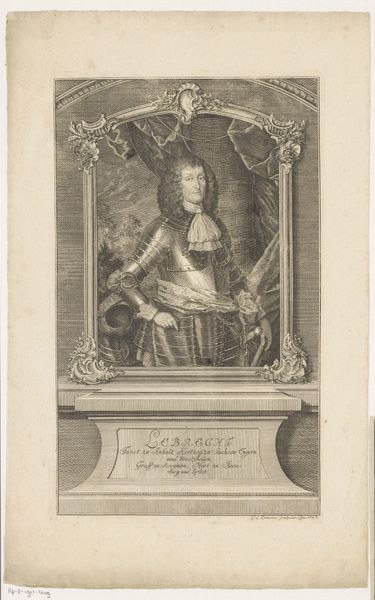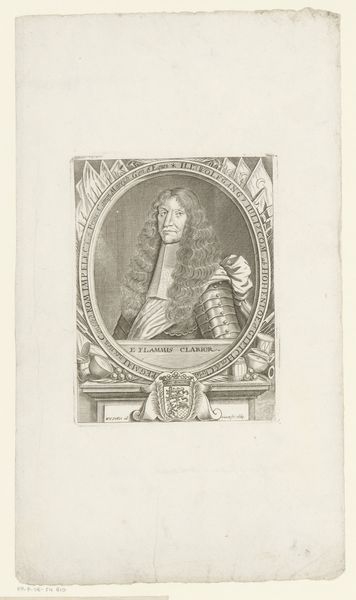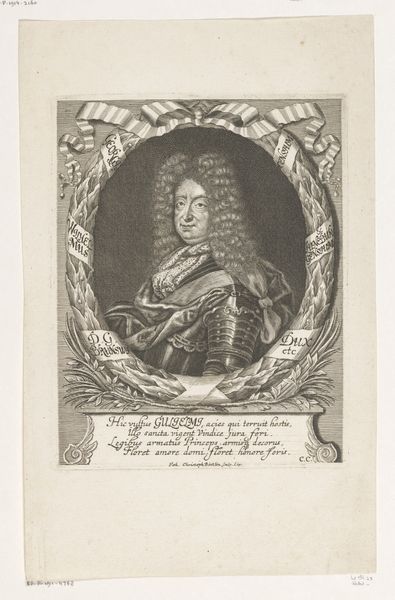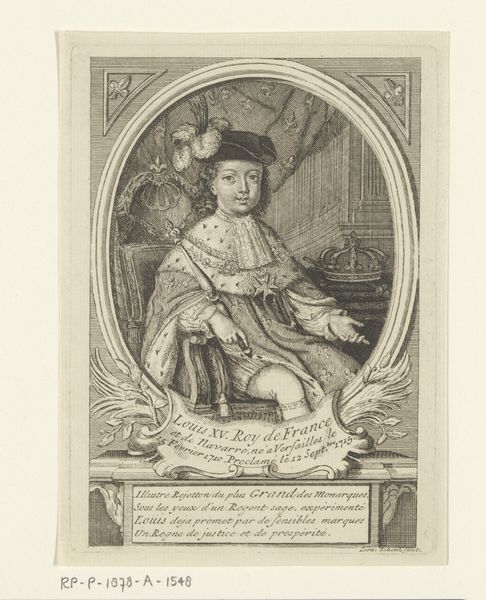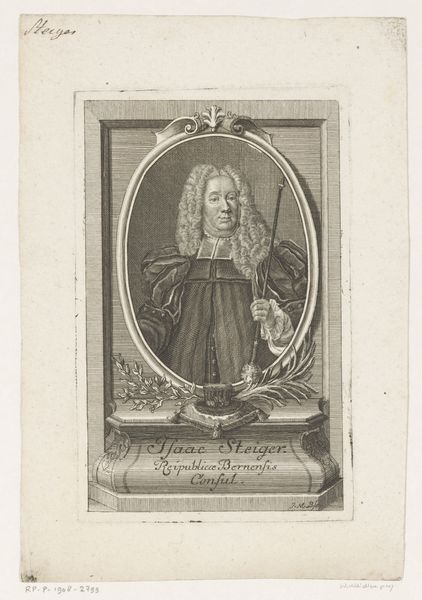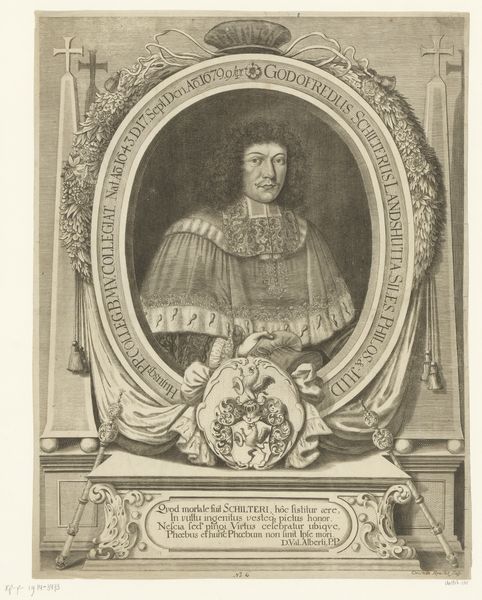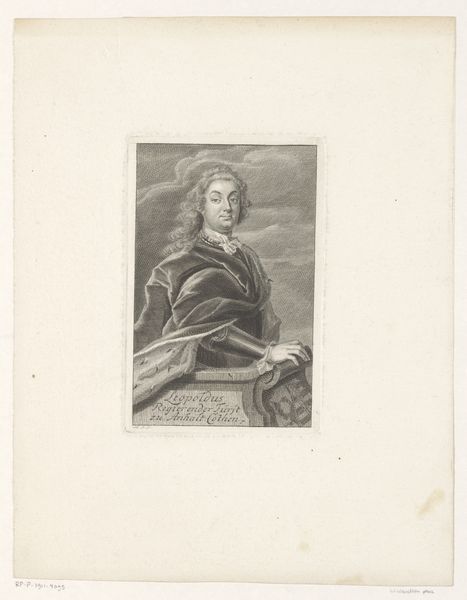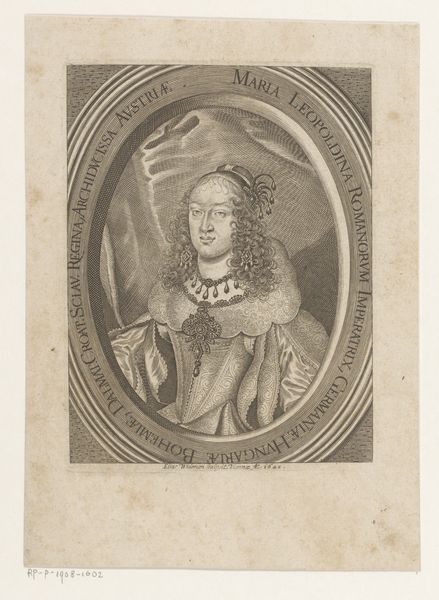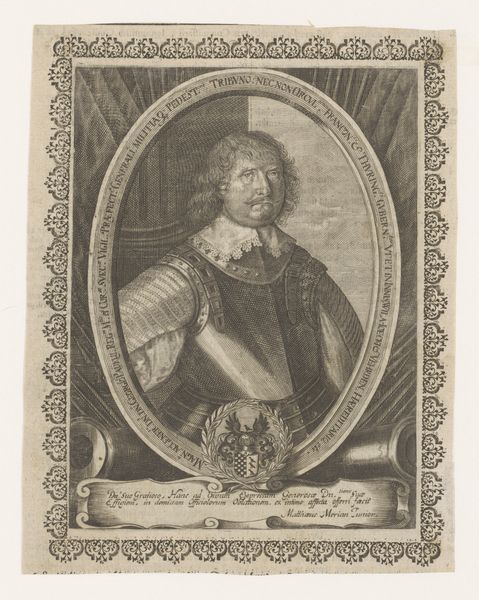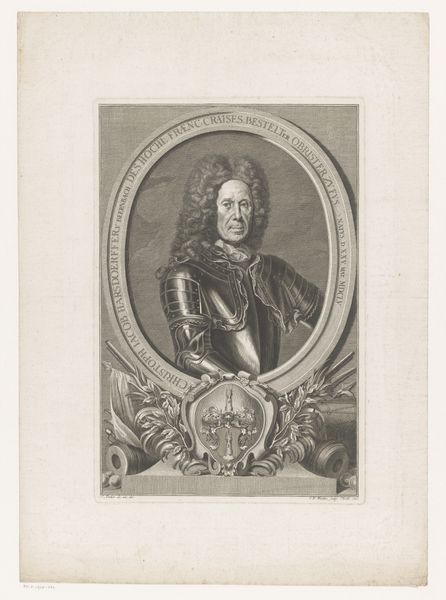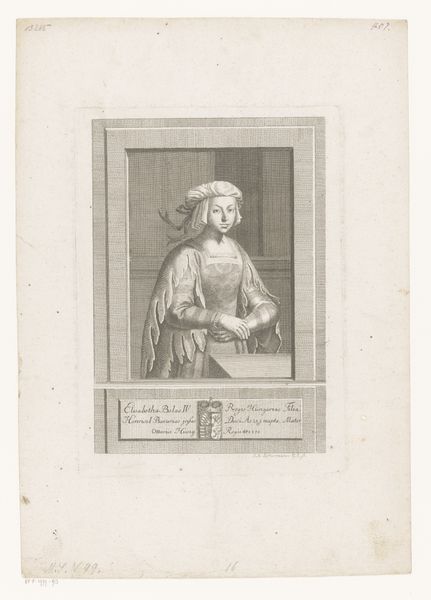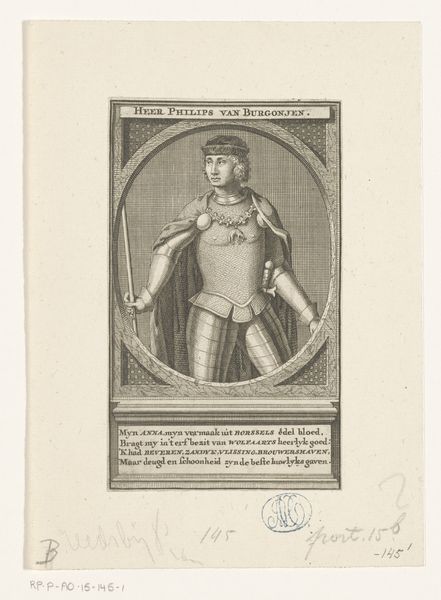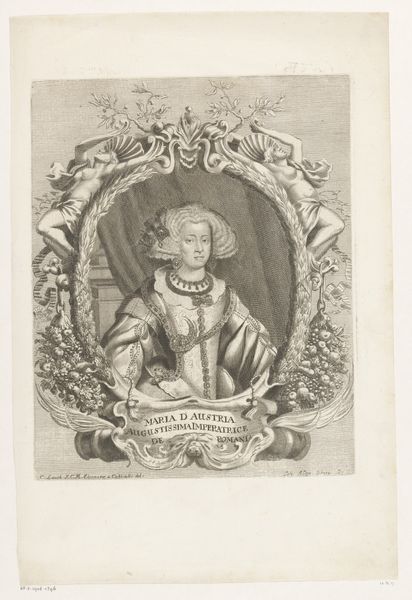
print, engraving
#
portrait
#
baroque
# print
#
history-painting
#
engraving
Dimensions: height 296 mm, width 183 mm
Copyright: Rijks Museum: Open Domain
Curator: We're looking at "Portret van Emanuel von Anhalt-Köthen," an engraving by Gottlieb Leberecht Crusius from 1756, held here at the Rijksmuseum. Editor: Immediately, I'm struck by the weight of this image—the heavy ornamentation and the sitter’s rigid posture convey such formality. Curator: Indeed. The composition follows baroque conventions. Observe the framing—the illusionistic stone architecture and the curtain in the background serve to enhance the sense of depth and theatricality, framing Emanuel within layers of representation. It emphasizes the sitter's presence as a figure of power. Editor: The lines are so precise, a testament to the engraver's skill, yet I’m interested in the production. These prints were multiplied and distributed, making portraits like these available to a wider audience than the unique painted portrait ever could. How does that reproducibility alter the function and reception of this work? Curator: The multiplication shifts its meaning from a unique likeness to something more symbolic. The precision afforded by the engraving process creates an ideal image of authority, an almost platonic form of leadership. And his armor? This links him to history paintings and the concept of noble duty. Editor: But look at the very material quality of the paper, the marks left by the engraving tool itself! We must consider that each individual print bore its own unique material history. Distribution networks also influenced how images spread through societies of this time and contributed to forming a larger understanding and identity. Curator: Those textures also produce an aesthetic quality. Note the dramatic interplay of light and shadow which highlights details within the armor as well as the elaborate curls in his hair, conveying a tactile, luxurious impression despite the starkness of the monochrome. Editor: So while you emphasize form, I'm pulled towards the societal circulation of these images and what these portraits communicated to broader audiences about nobility and its role in society at the time. The commodification of status, essentially. Curator: Yes, we each arrive through distinct paths, but find ourselves still admiring the density of its impact, formally or materially, more than 250 years later. Editor: Precisely, the intersection of aesthetics, process, and societal dissemination—a convergence that continues to captivate us.
Comments
No comments
Be the first to comment and join the conversation on the ultimate creative platform.
